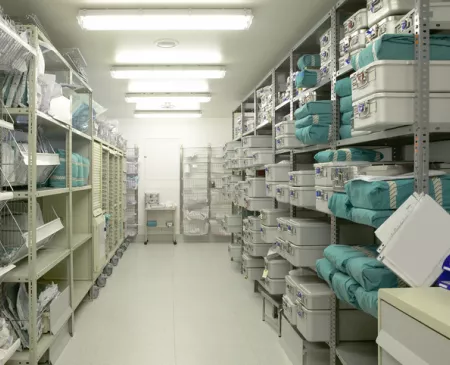The Buzz This Week
A new study published in the scientific journal Nature investigated the effects of increasing greenhouse gas emissions and subsequent intensifying climatic hazards (e.g., drought, heatwaves, wildfires, etc.) on human pathogenic diseases caused by infectious agents. The researchers found that 58% of documented infectious diseases have been affected by climate change. The most aggravating climatic hazards were warming, precipitation, and flood—which affected 160, 122, and 121 diseases, respectively.
The researchers also defined 4 ways climate hazards affect pathogens:
1. Hazards bring pathogens closer to humans. Disastrous flooding creates a breeding ground for mosquitos, which transmit viruses to humans via their bites.
2. Hazards bring humans closer to pathogens. Air pollution particles act as vehicles for viral transmission.
3. Hazards enhance pathogens by influencing their ability to adapt to more extreme conditions. Warmer temperatures cause heat-tolerant diseases to evolve, weakening the effectiveness of one of the body’s main defenses: the fever.
4. Hazards can negatively affect a body’s ability to cope with infection by placing additional stress on the body. Extreme heat creates a seasonal hazard, which is yet another worry for people in poor areas.
The federal government is continuing to take a more active role in addressing climate impacts on health. The Centers for Disease Control and Prevention (CDC) and the Department of Health and Human Services (HHS) Office of Climate Change and Health Equity (which was established in August 2021) launched an environmental justice index in early August, as the latest effort by federal healthcare agencies to combat public health challenges stemming from climate change. The tool uses data from multiple government agencies, including the U.S. Census Bureau and the Environmental Protection Agency (EPA), to rank the cumulative impacts of environmental injustice on health. It looks at every census tract and identifies the areas most at risk for the health impacts of climate change. This latest step from the federal government follows HHS' announcement in June of 2022 that it would prioritize 13 programs to include in the Biden Administration’s Justice40 pilot program, which focuses on delivering the benefits of environmental initiatives to disadvantaged communities.
Additionally, in April of 2022, the Biden Administration partnered with HHS to call upon private health systems to pledge to reduce their emissions by 50% by 2030 and to net zero by 2050 through the Health Sector Climate Pledge. The pledge also asked signees to publicly report on their progress, complete an inventory of their supply chain emissions, and develop climate resilience plans for their facilities and communities. As of July 1, 2022, 61 of the largest healthcare organizations in the country have signed the pledge, representing more than 850 private, public, and federal hospitals, and health centers.
Why it Matters
Climate change is affecting the physical and mental health of communities throughout the country. For example, heat, the No. 1 weather-related killer in the United States, disproportionately affects poor and marginalized people. A 2021 study in Nature found that heat islands (urban areas that have higher average temperatures than surrounding areas) are more densely distributed in poor and non-white areas within cities. According to the National Oceanic Atmospheric Administration, temperatures this past July were well above average, with more than 150 million people under heat warnings and advisories. Healthcare organizations should take proactive measures to prepare their communities for heat and other climate effects. Understanding how climate effects are impacting their communities, including implications for health equity, is a critical first step. Resources such as the Environmental Justice Index can inform such planning and community health efforts.
Additionally, healthcare organizations can not only address the impacts of climate change in their communities but also their own contributions to the issue. In 2020, the U.S. healthcare system was responsible for 8.5% of the country’s greenhouse gas emissions—an increase in the sector’s emission rate of 6% during the years 2010 to 2018. The source of these emissions is categorized into 3 scopes by The Greenhouse Gas Protocol: Scope 1 is emissions from sources owned or directly controlled by the health sector; Scope 2 is indirect emissions from the generation of energy purchased by health systems; and Scope 3 includes all other indirect emissions from the production and transportation of goods and services procured by the health sector (supply chain emissions). Scope 3 accounts for over 80% of overall healthcare emissions.
Some health systems have taken proactive steps to reduce their climate impact and emissions while working to aid their communities in dealing with the impacts of climate change. For example, CommonSpirit has released their 2022 climate action plan, which outlines their framework toward achieving net-zero emissions by 2040. Aspects of the plan include directly reducing operational emissions through climate initiatives, such as increasing energy efficiency and utilizing more renewable energy sources. The plan also states that it will reduce supply chain emissions through influencing partners to set their own net-zero targets. CommonSpirit’s action plan also includes an approach to create a climate-resilient community through focusing on addressing climate change’s acute impacts on patients, partnering with community partners to build climate-resistant infrastructure, and positioning themselves as a climate advocacy leader.
As climate change continually affects the world’s medical and healthcare needs, healthcare organizations can develop and implement plans to meet those needs and address their own contributions to climate change.
Related Links
The Commonwealth Fund
How the U.S. Healthcare System Contributes to Climate Change
STAT
Study Connects Climate Hazards to 58% of Infectious Diseases
HealthcareDive
CDC, HHS Release Environmental Index as Federal Government Ramps up Climate Oversight
NPR
Climate Change Is Killing People and Making Them Sick
World Bank
Fighting Infectious Diseases: The Connection to Climate Change
The Intergovernmental Panel on Climate Change
Climate Change 2022: Impacts, Adaptation, and Vulnerability
National Oceanic and Atmospheric Administration
A July of Extremes
Editorial advisor: Roger Ray, MD, Chief Physician Executive.







